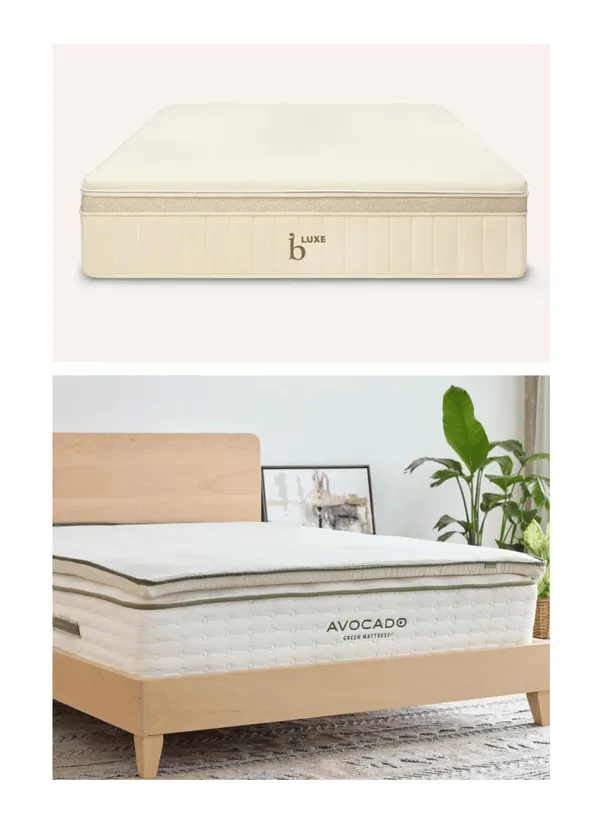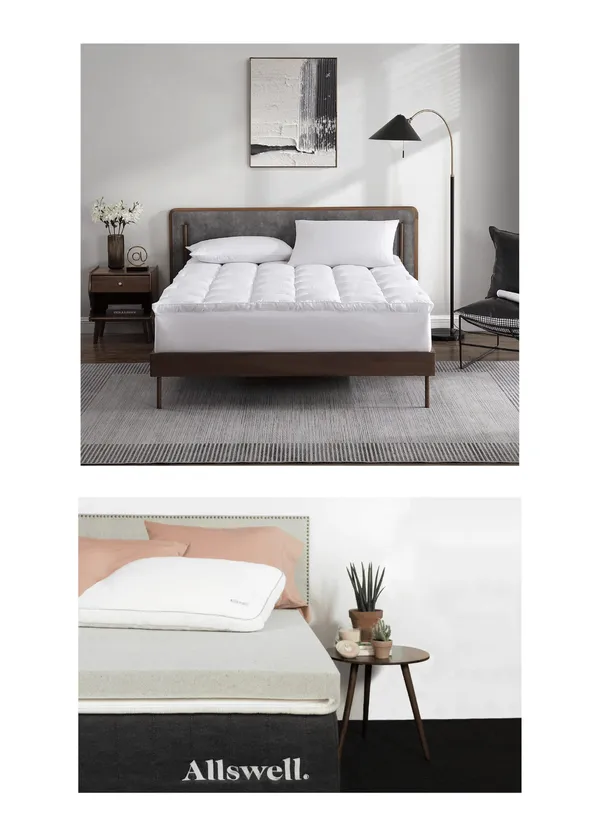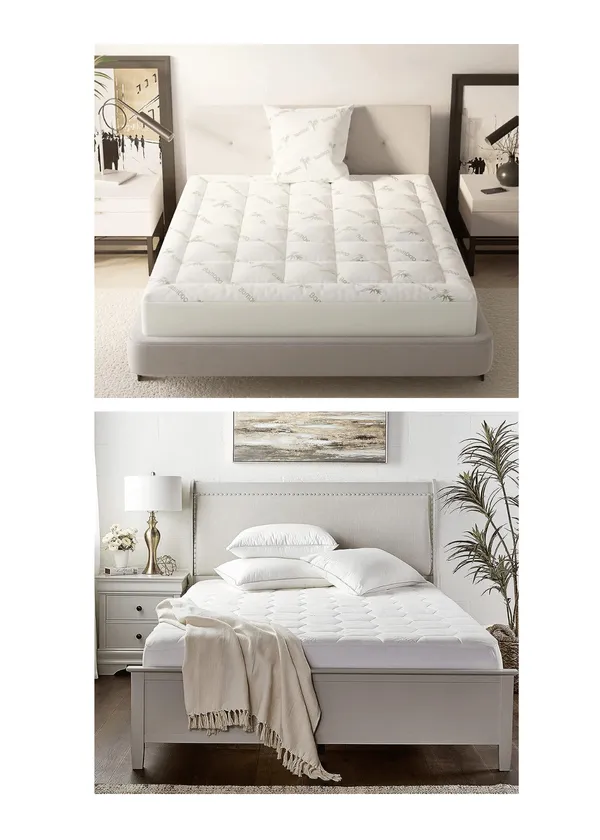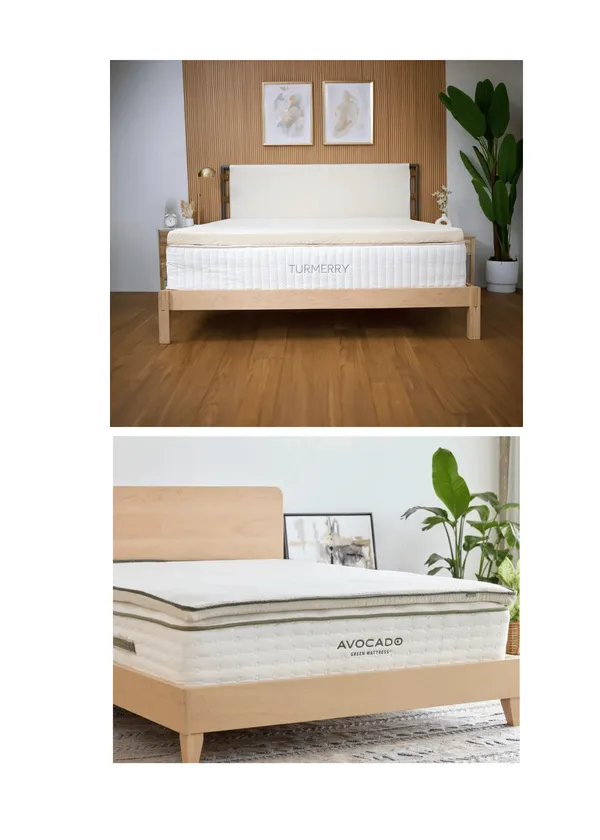(Last Update: 05/07/2024)
Did you know your sleep position can significantly impact your health, comfort, and sleep quality?
Choosing the right mattress from top-rated mattress companies based on your preferred sleep position could be the key to unlocking a rejuvenating and good night's sleep.
In this guide about "sleep positions and mattress preferences," we'll delve into the world of resting postures, mattress types, and shopping tips to help you make an informed decision and enhance your sleep experience.
Short Summary
- Understanding bedtime positions and their effects on overall well-being is essential for improved sleep quality.
- Different mattress types are better suited to the sleeping side, back, and stomach. Many foam mattresses offer comfort but may not suit combinations or heavier-weight individuals.
- When selecting a mattress, consider body weight, pressure relief, temperature regulation & company policies/reputation before trying it out as a couple to ensure the best purchase experience.
Understanding the Ideal of the Sleep Position and Its Effects on Your Sleep and Health

A Set of Pillows, Toppers and Mattress for a Good Night Sleep
(Credit: Canva)
Resting postures and positions can have a profound impact on your overall well-being. Each position has unique effects on health and comfort, with side sleeping being the most popular, accounting for around 41% of individuals.
However, back and stomach sleeping positions can also be beneficial or detrimental, depending on age, health, and specific medical conditions.
The selection of a suitable mattress is crucial for improved sleep quality. A poorly chosen mattress can lead to back, joint, and neck pain, irritability, fatigue, and other adverse effects.
Understanding the best mattress firmness for your resting postures is essential. Moreover, sleeping face up can sometimes worsen the pain for sleepers with neck pain—factors like body weight and individual preferences.
Now, let's explore the effects of different sleep positions in detail.

A young Woman sleeping on their Back
(Credit: Canva)
Side Sleeping
Side sleeping is the most common position, where one lies on their side with legs extended and arms bent in front of them.
To avoid shoulder pain, a side sleeper should use a supportive pillow, maintain proper spinal alignment, and consider using a body pillow.
This position alleviates stress on the back and hips, reduces heartburn, maintains proper spinal alignment, and enhances optimal nerve functioning.
It also helps to diminish breathing difficulties that cause snoring and reduce sleep apnea symptoms, making it a popular choice for those seeking a good night's sleep.
Regarding mattress selection, side sleepers should opt for a soft mattress with a softer feel. For those who prefer air mattresses, a medium firmness of 4 to 6 on the firmness scale should do wonders. Softer mattresses assist in alleviating pressure at crucial points, such as the shoulders and hips.
Memory foam or a pillow-top softer mattress are generally recommended for side sleepers, as they offer the most pressure relief.

An African American Comfortably Side sleeping
(Credit: Canva)
Back Sleeping
Back sleeping is the best for maintaining healthy spinal alignment and ensuring adequate respiration.
This position helps keep the hips and spine aligned, reducing too much pressure on the joints and promoting good posture.
Back sleeping benefits our skin as it eliminates friction between the face and the soft pillow case, reducing wrinkles and acne.
Medium-firm beds, ranging from 5-7 on the firmness scale, are suggested for back sleepers who need to avert back pain.
However, back sleeping is not recommended for those with GERD, acid reflux, sleep apnea, snoring, or pregnancy due to the potential health risks associated with this position.

A Young Man on a Back Sleeping Position, holding a Teddy Bear
(Credit: Canva)
Stomach Sleeping
Stomach sleeping, though not as common as side or back sleeping, involves lying on the abdomen with the head turned to one side.
This position can strain the spine, resulting in back and neck pain. Therefore, choosing the best sleep position and firm mattress is essential to minimize these risks.
A firm hybrid or foam mattress with a firmness level of 7 or 8 (or 6 for lighter sleepers) is typically the most optimal choice for stomach sleepers.
Minimal sinkage is crucial for stomach sleepers, as it helps maintain proper spinal alignment and prevent discomfort.

Young Woman Sleeping in Their Stomach
(Credit: Canva)
Choosing the Right Mattress Based on Your Sleep Position
Selecting a suitable mattress based on your position is essential for optimal comfort and support. Sleeping position can affect the detoxification process. Lying on your left side enhances lymphatic drainage.
Sleeping on a proper mattress plays a significant role, too. An uncomfortable mattress might lead to restless sleep, affecting the body's recovery and body’s natural detoxification process.
A suitable mattress provides your body with the necessary support and comfort to maintain an optimal position, aiding the detox process.

A Person Testing a Mattress Firmness
(Credit: Canva)
Different mattress classifications cater to side, stomach, and back sleepers' unique needs, ensuring a restful night's sleep.
Before purchasing your next bed, you must know how the mattress feels. Spend time lying in various sleeping positions, checking comfort and contouring. Assess firmness, ensuring it doesn't sag, supports your spine, and suits your weight and sleep habits. If shared, evaluate motion transfer.
Foam beds are best suited for side sleepers, relieving cushioning and pressure points in critical areas. On the other hand, an innerspring mattress is ideal for back sleepers and helps to avoid back pain due to its firmer feel and support. Stomach sleepers can benefit from a latex mattress, which offers a balance of comfort and support.
For combination sleepers, hybrid mattresses provide a responsive and versatile option, catering to the needs of various sleeping positions.

A Young Person in side sleeping position
(Credit: Canva)
Memory Foam Mattresses
Memory foam is a type of foam that provides comfort and support to your body. It distributes weight evenly while reducing pressure along the spine.
This feature makes Foam mattresses particularly suitable for side sleepers, as they offer the most serious pressure points for relief and prevent shoulder and hip pain.
However, there may be better choices than memory foam beds for combination sleepers, as the contouring benefits ideal for side sleepers can impede movement and make it difficult to switch positions.
Additionally, heavier stomach or back sleepers should avoid memory foam beds, as they may not provide adequate support.
However, there are firmer foam beds suitable for stomach sleepers. These mattresses offer the necessary support to keep the spine aligned and prevent the hips and belly from sinking too deeply, which can cause discomfort and back pain. Brands like Tempur-Pedic, Casper's Original Foam, and Plank by Brooklyn Bedding offer firmer foam beds that could suit stomach sleepers.

Siblings Jumping on a New Mattress
(Credit: Canva)
Innerspring Mattresses
Innerspring mattresses are a popular and cost-effective option, providing a firmer feel ideal for back and stomach sleepers with back pain.
Modern innerspring beds come with additional support layers of cushion on the back sleeper comfort layer above the springs, providing a soft feel for side and lighter-weight sleepers.
An innerspring mattress can feature either a continuous or pocketed coil system. Coils Individually pocketed, also known as pocket springs or Marshall coils, are a type of coil used in innerspring mattresses. Continuous coil systems are interconnected, making motion transfer isolation between sleepers difficult, while pocketed coil systems offer undisturbed sleep at a slightly higher cost.
Latex Mattresses
Latex mattresses are constructed from natural latex derived from rubber tree sap, making them more durable and organic than other mattress types. They are cooler and more adaptive than most memory foam mattresses, responding to body movements while isolating motion.
Due to their balance of comfort and support, latex mattresses are suitable for all sleepers, including stomach sleepers requiring a firmer mattress surface to maintain proper spinal alignment.

A Man Enjoying a New Mattress
(Credit: Canva)
Hybrid Mattresses
A Hybrid mattress combines the benefits of innerspring support and foam or latex comfort layers, offering a balance of firm support and plush comfort.
They facilitate air circulation and provide a more robust structural support system than a solid foam mattress, making them suitable for all sleeping positions, particularly side sleepers.
Combination sleepers can benefit from hybrid mattresses, as they are softer and more responsive due to the combination of an innerspring mattress for support and polyurethane foam or even latex foam and comfort layers. Polyurethane foam is commonly used in many cheaper mattresses due to its affordability and ease of production. This type of foam is versatile and can provide reasonable comfort and support.
Factors to Consider When Choosing a Mattress
When choosing the perfect mattress, it's essential to consider factors such as physical weight, pain and pressure relief, and temperature regulation. Each of these factors can significantly impact the comfort and support of your mattress and, ultimately, the quality of your sleep.
In addition to these factors, it's crucial to consider your partner's preferences and the company's policies and reputation when shopping for a mattress. This Attribute ensures a satisfactory purchase and a comfortable sleeping experience for you and your partner.

A Woman Sleeping on their Side
(Credit: Canva)
Body Weight
Body mass plays a significant role in determining the ideal mattress's firmness and support. Individuals of a lighter weight typically prefer a softer bed, while those of an average or greater weight are generally more comfortable on medium-firm and firm beds.
Shorter, typically thinner mattresses, like bunk or trundle beds, can be ideal for space-saving needs but may compromise comfort and durability. In contrast, taller mattresses, with additional layers, often offer enhanced comfort, support, and longevity, providing a more luxurious sleeping experience.
Lighter individuals may find soft to medium-firm beds more suitable, while heavier individuals may require the added sturdiness of coils underneath the foam to avoid back pain.
Durability is of utmost importance to sleepers with higher physique weight, as they can cause more wear in the soft beds and the top layers of a mattress. Higher body mass people often require a mattress with a thicker comfort layer. Such mattresses commonly make use of higher-density materials.

A Woman Enjoying a New Comfortable Mattress
(Credit: Canva)
Pain and Pressure Relief
Pain and pressure relief is essential to choosing the ideal mattress, as it can significantly impact your sleep quality and overall well-being.
However, medium-firm mattresses are recommended for individuals with chronic back and neck pain. Those suffering from neck and back pain should ensure adequate spine support to alleviate discomfort.
Individuals with musculoskeletal pain may find relief with medium-firm foam mattresses, as they can alleviate pain and expedite the time to fall asleep. Selecting a mattress that provides proper support and pressure relief is crucial to achieving a comfortable and restful night's sleep.
Temperature Regulation
Temperature regulation is a vital factor in the mattress temperature and ensures an optimal sleep experience for those who sleep hot. A mattress that retains heat can cause discomfort and disrupt sleep. In contrast, a mattress that promotes airflow to regulate mattress temperature and maintains a more comfortable sleeping temperature can enhance sleep quality.
When shopping for a mattress, consider cooling features that help regulate temperature and maintain an ideal sleeping environment.
Customer reviews can offer valuable insights into the efficacy of these cooling features, allowing you to make an informed decision and choose a mattress that promotes a comfortable and refreshing sleep experience.

A Man Waking up from a good night's Sleep
(Credit: Canva)
Mattress Shopping Tips
Now that you know sleeping positions, mattress types, and factors to consider when choosing a mattress, it's time to explore some practical shopping tips. These tips include trying the mattress before purchasing, considering your partner's preferences, and evaluating company policies and reputation.
Considering these factors will not only help you find the perfect mattress but also ensure a hassle-free and satisfying shopping experience. So, let's explore these tips and discover how to maximize your mattress shopping journey.
Trying Before Buying
You can try a mattress before you purchase. It is essential to meet your comfort and support needs. Testing a mattress in-store can help you avoid the inconvenience of returning a mattress unsuitable for you.
If you purchase a mattress online, use the trial period to evaluate the bed. This option allows you to assess the mattress in your environment and ensure it provides the comfort and support you require for a restful sleep.

A Woman Sleeping on their Side
(Credit: Canva)
Considering Your Partner's Preferences
When shopping for a mattress with your partner, it's essential to consider both your sleeping requirements and preferences.
Couples should consider factors such as budget, mattress firmness level, and the level of compromise both parties are willing to make. Shopping and testing the same mattress together can ensure both partners are satisfied with the chosen mattress.
A medium-firm latex or hybrid mattress may suit couples with divergent sleeping postures.
Evaluating Company Policies and Reputation
When shopping for a mattress, it's crucial to evaluate the company's policies and reputation. Customer reviews can offer honest and detailed information about products and policies, helping you make an informed decision.
Also, could you consider warranty, return policy, and care instructions when purchasing a new mattress? Ensuring that the new mattress meets the necessary flammability requirements is another essential aspect before purchasing a new mattress.
Summary
In summary, understanding the effects of sleeping positions on your health and comfort and choosing the right mattress based on your sleeping position and personal preferences is essential for a rejuvenating and restful night's sleep.
By considering factors such as body weight, pain and pressure relief, temperature regulation, and your partner's preferences, you can make an informed decision and invest in a mattress that will improve your sleep experience and overall well-being.
So, don't wait any longer – take the plunge and find the perfect mattress to suit your unique sleep needs today!
Frequently Asked Questions
What sleeping position and mattress preference people with sleep apnea should choose?
People with sleep apnea often benefit from sleeping on their side or in an elevated position to keep the airways open. An adjustable bed or wedge pillow can be beneficial. Mattress preferences are generally important. What is the absolute best sleeping position?
Overall, the best sleeping position is lying on your side or back. These positions support your spine, reduce back and shoulder pain and pressure on spinal tissues, and help your muscles relax and recover.
What are the advantages and drawbacks of very firm mattresses?
The advantages of very firm mattresses include improved spinal alignment, less sagging, and optimal support, particularly for heavier individuals or stomach sleepers. Drawbacks include potential discomfort for side sleepers, who may experience pressure points, and for lighter individuals who might not sink in enough for proper support.
What firmness should side sleepers use?
Side sleepers should choose a medium-firm mattress to support their sleeping position best. With varying heights and weights, Dr. Breus advises adjusting the firmness based on individual preference.
For heavier individuals of 250-300 pounds, a different mattress may be more beneficial than a plush mattress for someone 130-150.
Do side sleepers need firm or soft?
For side sleepers, a medium-soft to medium mattress is the ideal choice. Soft enough to cushion and relieve shoulder pressure, yet firm enough to support spinal alignment. Opting for something too soft or firm could cause discomfort and strain the body.
As a side sleeper, you need a mattress that strikes the perfect balance between softness and firmness. A medium-soft to medium mattress helps alleviate shoulder and hip pain while maintaining proper spinal alignment.







